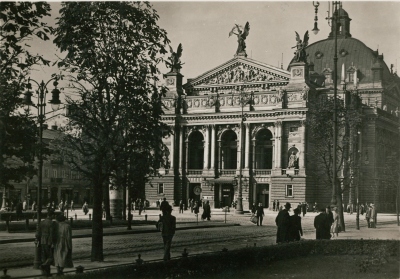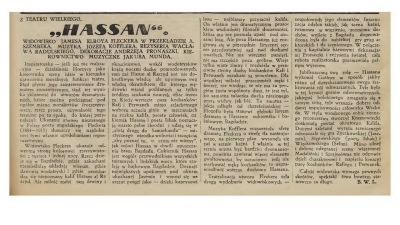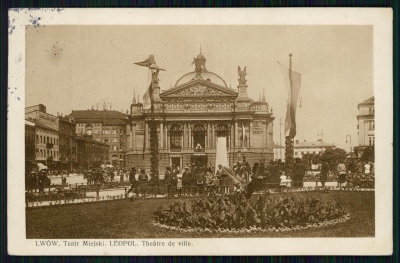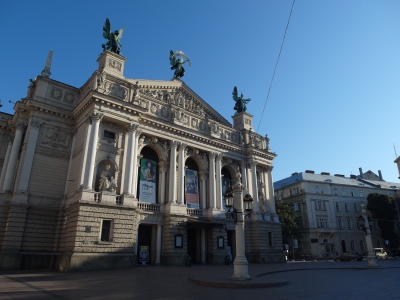Well-known singers (1918–39) included Adam Didur and Ada Sari (both sang, among others, also at the Teatro alla Scala), Wanda Wermińska, Jan Kiepura (both successfully performed at the Vienna’s Staatsoper; Kiepura made his debut in Lwów, 1925). Polish premieres of operas by foreign composers included, in the interwar period, Erich Wolfgang Korngold’s Die tote Stadt (1928), and by Polish artists – Mieczysław Sołtys’s Panie Kochanku (1924), among others.
There were also popular operas by Giuseppe Verdi, Georges Bizet, and Stanisław Moniuszko, as well as works by contemporary composers: Richard Strauss’s Salome (Lwów premiere in 1924), Ludomir Różycki’s Eros and Psyche( 1920) as well as Casanova (1925). Major drama productions included Juliusz Słowacki’s Kordian (dir. Leon Schiller, music by Tadeusz Majerski, 1930) and Poland’s second (after Warsaw) production of Roman Palester’s ballet Song of the Earth (1938).
Lwów’s Grand Theatre staged two spectacles with music composed or arranged by Józef Koffler: James Elroy Flecker’s play Hassan: The Story of Hassan of Bagdad, and How he Came to Make the Golden Journey to Samarkand, with Koffler’s own music (premiered on 12 December 1936), and Ludwig A. Minkus’s ballet Don Quixote, for which Koffler arranged and supplemented the music. Spectacular concert performances at the Grand Theatre included Maurice Ravel’s 1932 composer portrait (Boléro and Piano Concerto in G Major, the latter premiered in Paris only two months before) and a similar programme dedicated to Béla Bartók (15 December 1936). Two concert programmes (on 19 January and 1 February 1937) featured Józef Koffler’s Symphony No. 2 (cond. Hermann Scherchen).








